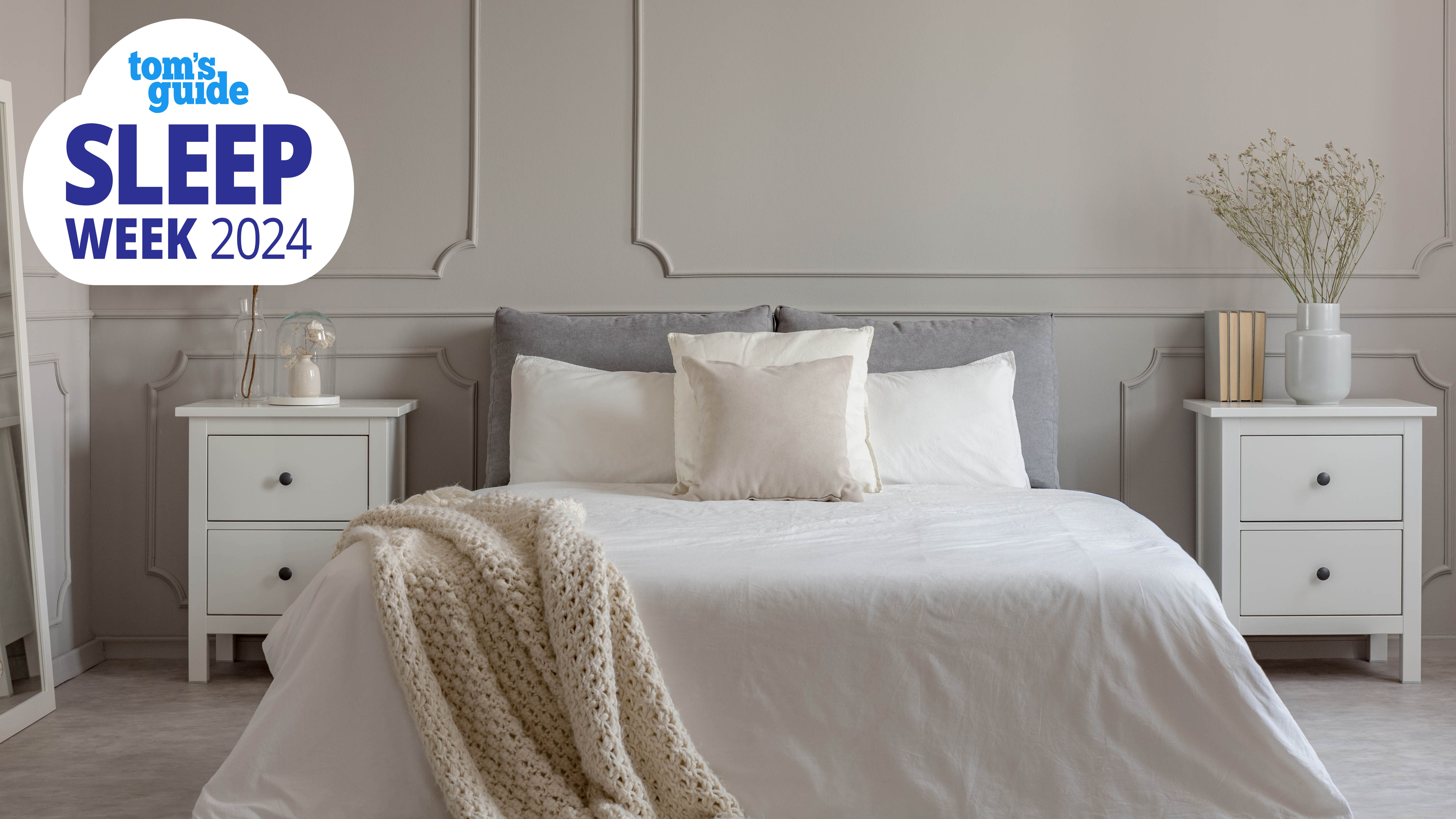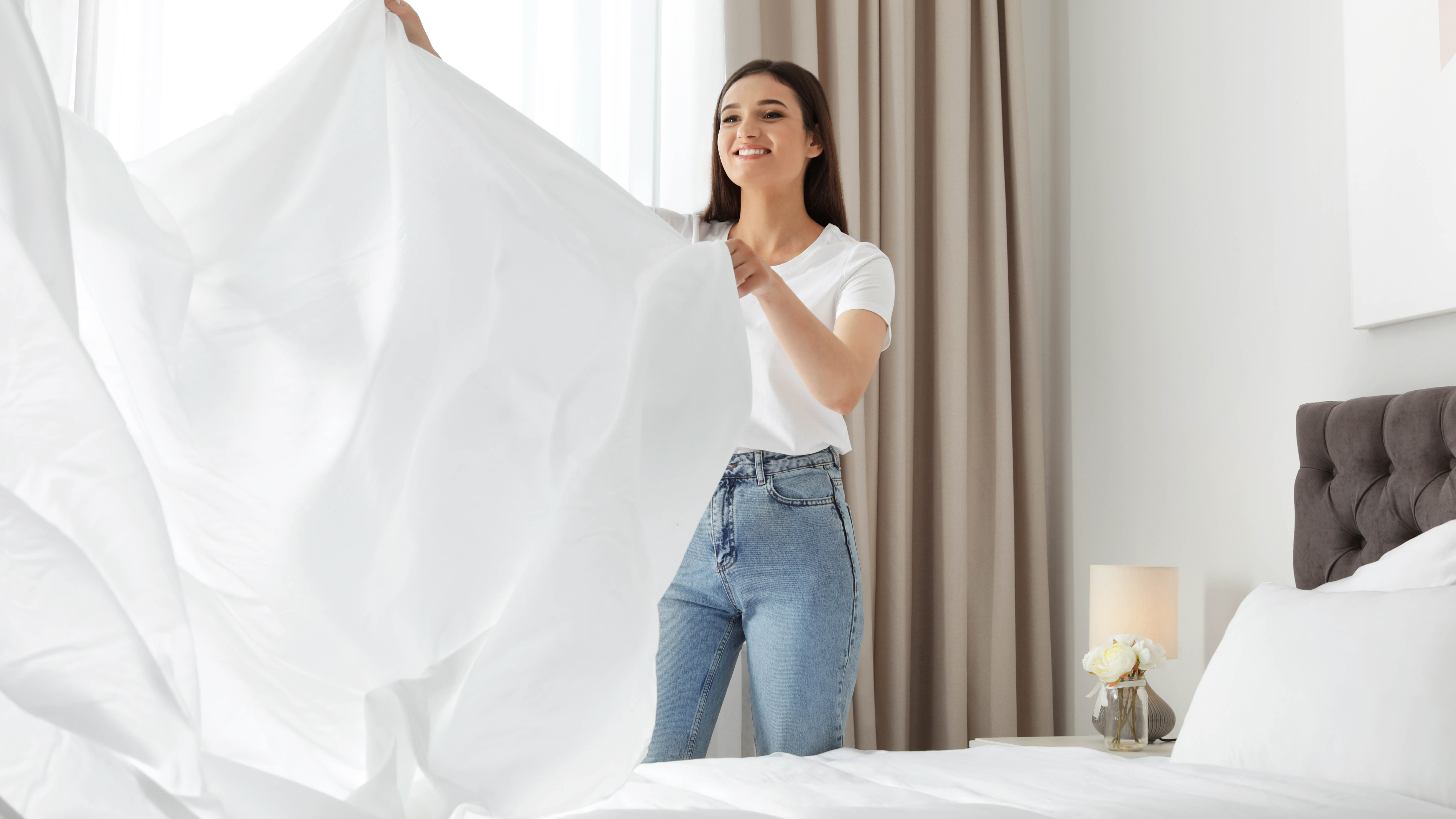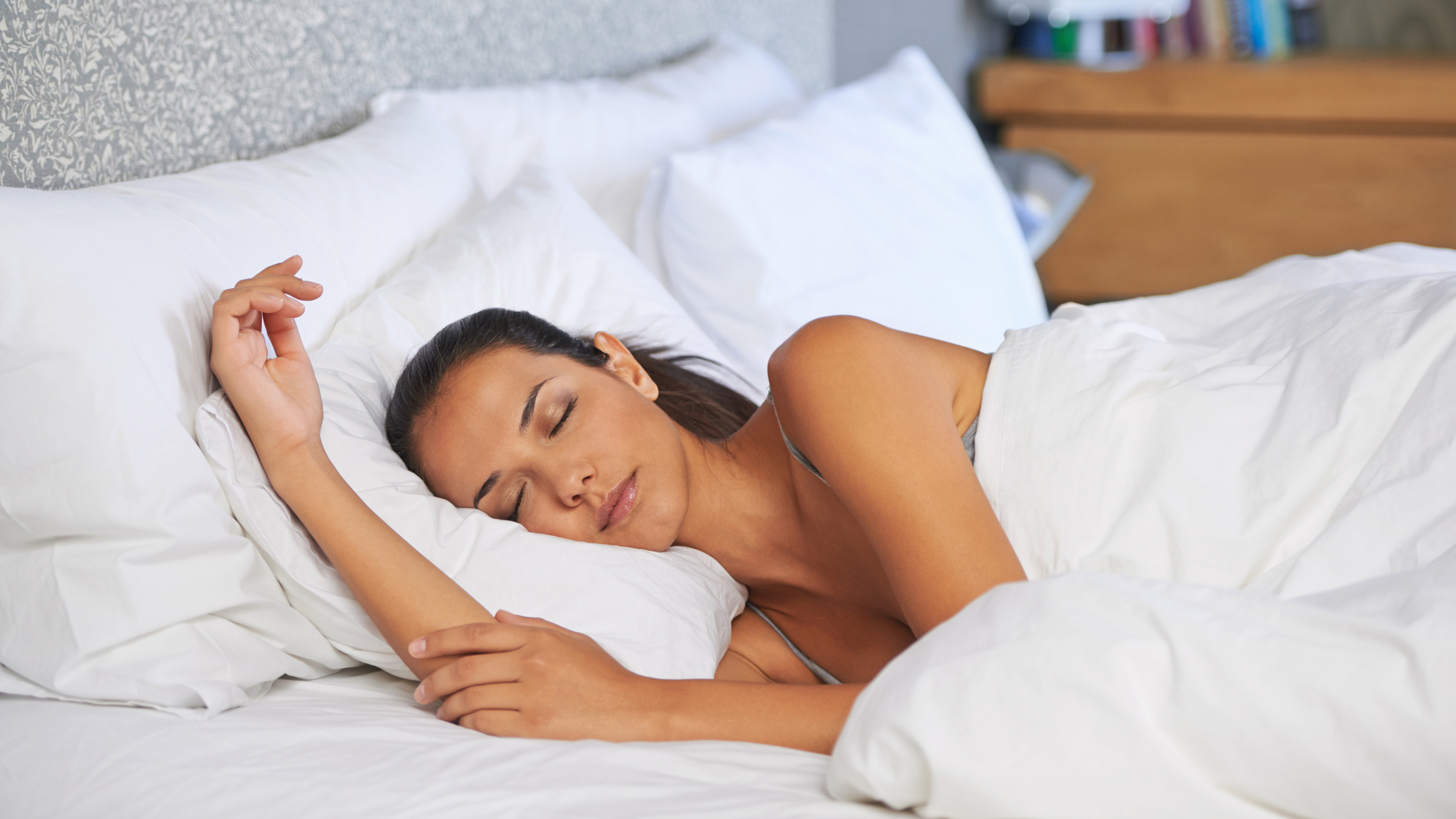How to make your bed like a hotel would — types of sheets and how many pillows you need
Here’s how to upgrade your bed with a luxury hotel makeover

Whether you’re travelling on vacation or on a business trip, one of the perks about staying in a fancy hotel is the luxury of a great night’s sleep.
Be it the crisp, smooth sheets, plump pillows, and of course, the super comfy mattress, the bed is the centrepiece of any hotel room. Not only should it offer much comfort, but it should be inviting and presentable.
And if you enjoy spending time in a well-prepared, luxury bed, why not create that hotel feel at home? From investing in the right mattress for you, to knowing what type of bedding to buy, you can capture the same feel and luxe quality of a hotel room. In fact, all that would be missing is room service!
We spoke to some experts on how to make your bed like a hotel would if you're looking to get the luxury look at home.
1. Invest in the right mattress

One of the essential things of a hotel bed is optimum comfort — and making sure you have one of the best mattresses can make all the difference to your sleep.This will provide the right support for your body type and sleep position, super comfortable and will relieve any tension from ailments.
Depending on your sleep style, there are several types of mattresses, including memory foam, hybrid, cooling and organic. In fact, many luxury hotels opt for hybrid mattresses which are firm, more breathable yet cozy, or memory foam mattresses that offer extra bounce and warmth for guests. For example, the Marriott hotel uses a soy-based foam — you can learn all about it with our guide 'what mattress does the Marriott hotel use?'
Alternatively, if your mattress is relatively new, or you want to upgrade your guest room, you can opt for one of the best mattress toppers instead. These are essentially a strong layer of foam that offer additional support to your existing mattress — especially if it’s worn, or you have back problems. What’s more, these can instantly change the overall feel of your bed by making it softer, firmer, cooler or warmer.
Get instant access to breaking news, the hottest reviews, great deals and helpful tips.
However, it’s not recommended to use a mattress topper as a mattress for long-term use.
Nectar Mattress: from $349 at Nectar Sleep
During Sleep Awareness Week, you can save up to 40% on a range of memory foam and hybrid mattresses at Nectar Sleep. We rate the Nectar Memory Foam as the best mattress for most sleepers with a smaller budget seeking a breathable and supportive all-foam bed to relieve pressure on joints, reducing aches and pains. A queen is now reduced to $649, with a lifetime warranty and a year's sleep trial.
2. Ditch your colorful bedding for all-white sheets

The general rule of thumb is to stick to a predominantly white bedding, to achieve that luxurious hotel look. So that means swapping out your floral, bold or geometric-patterned bedding for crisp, crease-free, white sheets.
The main reason for hotels using white bedding is so it won’t hide any stain, and will alert the guest as to how clean and fresh the sheets are. In addition, white is often associated with luxury, because of how they look super clean and feel.
“Almost all hotels use crisp, white sheets—no fussy patterns or colors,” says Marisa Cohen, health writer for Hearst publications. “Why? It creates a sense of the bed always being clean, fresh, and calm, not to mention making you feel like you’re sleeping in a cloud.”
What’s more, white is the perfect, neutral backdrop if you want to add colorful accessories, such as throw pillows or a bed runner. To maintain your pristine linen, you may also want to check out how to make white sheets brighter in 3 simple ways.
3. Get good quality sheets

In addition to having all-white bed linen, make sure you invest in good quality sheets. Most hotels tend to use either 100% cotton or Egyptian cotton to achieve the super soft, luxury feel.
“Luxury sheets can be made from a variety of materials, including cotton, linen, bamboo, and silk,” agrees Christina Heiser, the senior content manager at Saatva. “Cotton, though, is far and away the most popular material for sheets because it has an incredibly soft feel, offers excellent breathability, and tends to be very durable.
Natural cotton that hasn’t been heavily dyed is the most eco-friendly and safest for people with sensitive skin. Sheets made from synthetic materials, like polyester, won’t be as soft and breathable or as long-lasting — and they could irritate your skin.”
In addition, hotel bedding is usually around the 300-thread count mark, which is sufficient for a good night’s sleep. And while higher thread count sheets and pillows are more tightly woven, making them softer, smoother, and more durable, this doesn’t necessarily mean that they are better for your sleep.
“The ideal thread count for sateen cotton sheets is between 300-600, while the ideal thread count for percale cotton sheets is between 200-400,” agrees Heiser. “Anything higher than that traps body heat and can cause you to sleep hot. Saatva’s sateen sheets have a 300-thread count, while our percale sheets have a 200-thread count. This results in optimal softness and breathability.”
So if you’re a hot sleeper, and tend to sweat at night, it’s best to opt for a lower, and more comfortable, thread count for bedding.
4. Layer your bedding

If you’ve wondered how housekeeping can change a hotel bed in just minutes, it’s actually not that hard (with practice).
Generally, hotels use two, oversized flat sheets rather than a fitted sheet. First, start with your flat sheet that is tucked around the mattress, before adding another flat sheet which lays between the guest and a lightweight/waffle blanket.
Next, a third sheet, (the top cover), is used on top of the blanket, which is usually a fluffy down or down alternative comforter. Down comforters offer that exceptional warmth, extra comfort and luxury for a cozy night.
While this may sound like an excessive number of layers, the "weight" is intended for warmth. Similar to having one of the best weighted blankets, this will add to your quality of sleep and ease stress — essentially, providing the experience of a hug from under the weight.
You might also want to check out how to put on a duvet cover in 4 easy steps.
5. Choose the right pillows

Alongside the perfect mattress, the best pillows can make all the difference to the quality of sleep. And while luxury hotels are praised for their plump, supportive pillows, there are so many different types to choose from.
These range from down pillows, feather, and down-alternative pillows to ones suitable for side or back sleepers. Typically, hotels stick with 100% duck or feather-down cushions, as these offer ultra warmth and soft comfort. However, if you suffer with any allergies, bamboo or synthetic down alternatives can be just as plush and luxurious.
Another dilemma is whether it’s better to sleep on one pillow or two? “In general, most people can sleep well with one pillow under their head,” says Brittany Leitner, author for Sleep Enlightened. “In certain cases, you may benefit from an additional pillow, such as one between your knees if you’re a side sleeper or under your pelvis if you’re a stomach sleeper.”
Also, if you or a partner snores, check out our article looking at whether anti-snore pillows work and if should you buy one?
More from Tom's Guide
- 9 tips to make your guestroom feel like a hotel
- Try these 9 Feng Shui bedroom tips to get a better night’s sleep
- Should your bed face the door? Here's what the experts think
- How to make your pillows last longer— 7 tips that actually work

As the Homes Content Editor, Cynthia Lawrence covers all things homes, interior decorating, and garden-related. She has a wealth of editorial experience testing the latest, ‘must-have’ home appliances, writing buying guides and the handy ‘how to’ features.
Her work has been published in various titles including, T3, Top Ten Reviews, Ideal Home, Real Homes, Livingetc. and House Beautiful, amongst many.
With a rather unhealthy obsession for all things homes and interiors, she also has an interior design blog for style inspiration and savvy storage solutions (get rid of that clutter!). When she’s not testing cool products, she’ll be searching online for more decor ideas to spruce up her family home or looking for a great bargain!


